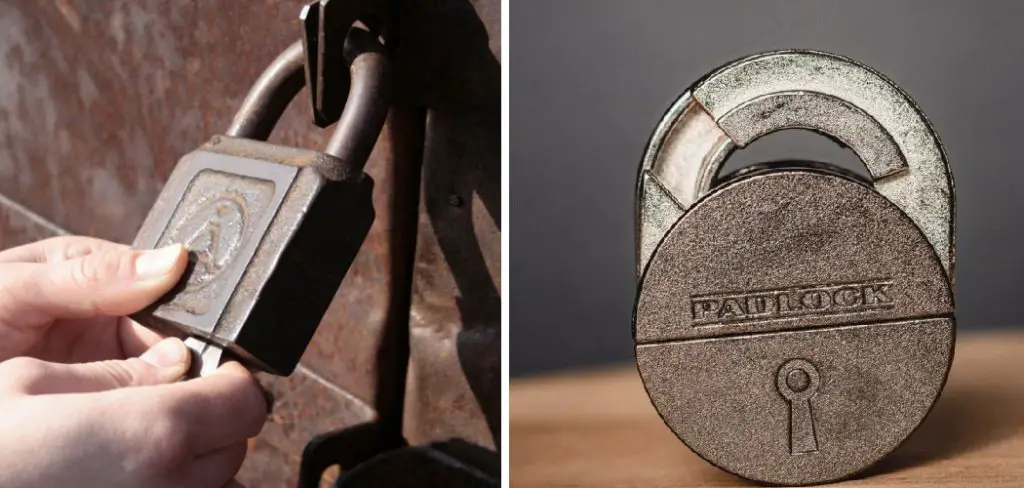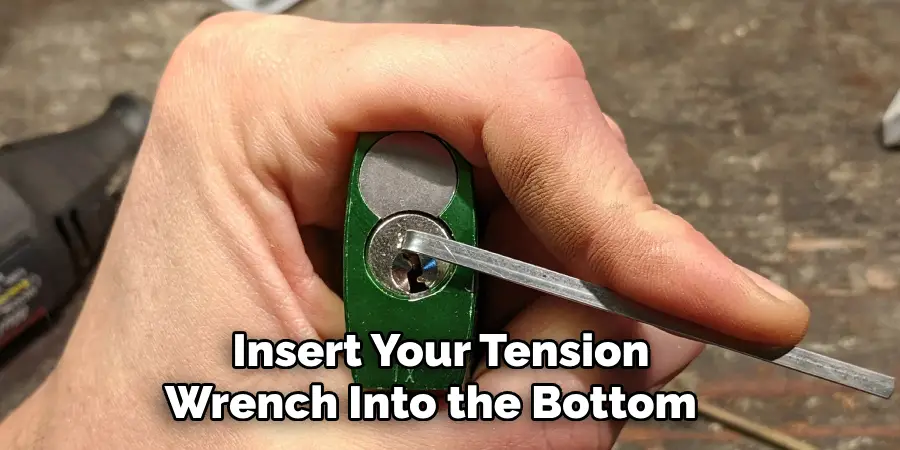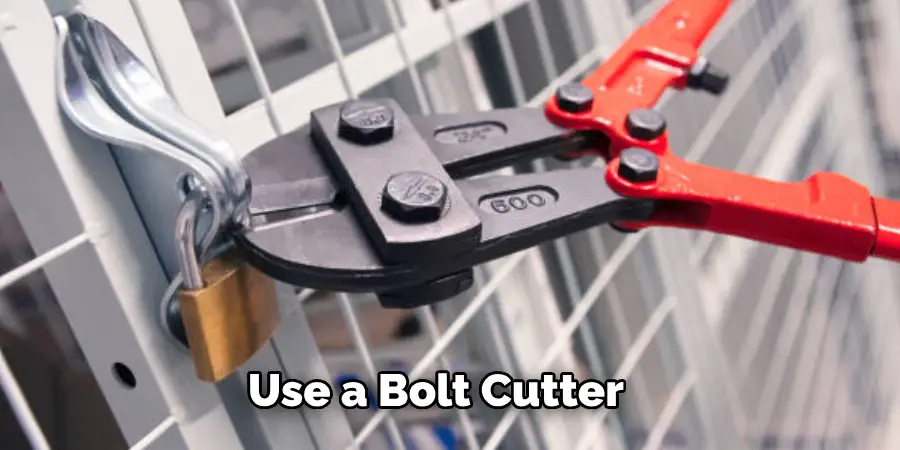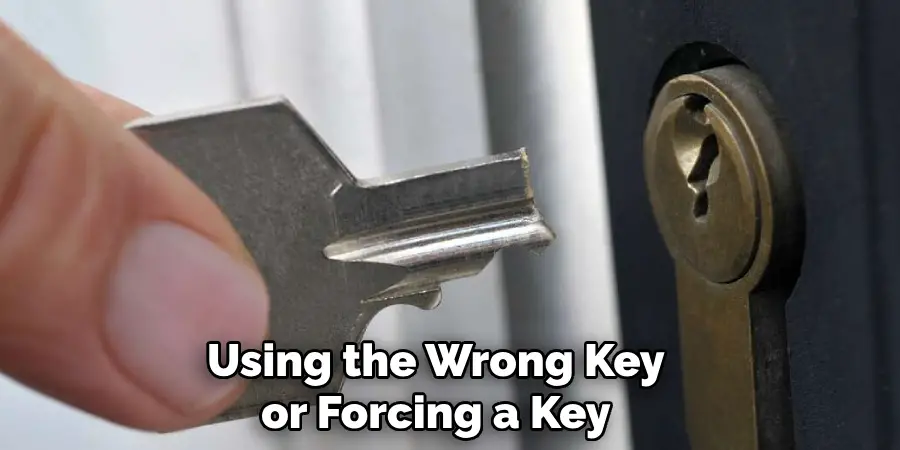Are you looking to make a quick statement or secure your locker, bike, etc., in style? If so, padlocks may be the way to go! But when you find yourself locked out of your padlock due to forgetting its combination – don’t worry!

To give you an idea of what’s involved in solving a padlock, we have compiled this comprehensive guide to provide insight into achieving success. Learn about traditional unlocking methods like picking or shimming and other great ways to solve complex locks without damage.
Whether you encounter a sticky situation or want to brush up on your knowledge for fun, this article covers everything. We’re here to help with our comprehensive tutorial on ‘How To Solve A Padlock.’ With step-by-step instructions and helpful tips for figuring out those tricky codes, this guide will surely get you back into that safe spot in no time. So, let’s begin our journey into unlocking the mysterious world of padlocks together!
Necessary Items
Before beginning to solve a padlock, you’ll need a few essential items:
- A basic understanding of how locks work and their components.
- Various lock-picking tools (such as tension wrenches, rakes, hooks, etc.) exist.
- A thin piece of material for shimming (like credit card plastic or aluminum foil).
- A small amount of patience and determination.
- And, of course, the padlock itself!
10 Steps on How to Solve a Padlock
If you’ve accidentally locked yourself out of your padlock, don’t worry! With a little practice and some basic lock-picking tools, you can easily get back inside without any damage. Here are a couple of traditional unlocking methods to try:
Step 1: Picking Method
First, insert your tension wrench into the bottom of the keyhole and apply light pressure in the direction that would open the lock. Next, insert your pick into the top of the keyhole and feel around for pins. Using a slight upward or downward motion with gentle pressure, try to push each pin up until it clicks into place. Once all pins are set correctly, you should be able to turn the tension wrench and open the lock.

Step 2: Raking Method
For this method, you will need a rake-shaped pick. Insert the tension wrench and apply light pressure as before. Then, insert your rake into the keyhole on top of the pins and quickly move it back and forth in a “raking” motion. This technique works best on simpler locks with fewer pins.
Step 3: Shimming Method
If traditional picking methods don’t work, you can try shimming. First, ensure the padlock’s shackle (or locking part) is in the open position. Then, insert your thin material between the body and the lock’s shackle. This will push the locking mechanism out of place and allow you to open the padlock easily.
Step 4: Figure Out the Combination
If you have a combination padlock, try using a default code or any known combinations that may have been used. If all else fails, you can try guessing common number patterns like dates or lucky numbers.
Step 5: Use a Bolt Cutter
If all other methods fail, you can always use a bolt cutter. This is the last and most extreme option, as it will damage your padlock and render it unusable.

Step 6: Practice Makes Perfect
Lock picking may take time to master, so don’t get discouraged if you don’t succeed on your first few tries. Keep practicing, and you’ll soon become an expert.
Step 7: Consider the Lock Type
Different types of locks require different techniques for unlocking. For example, combination padlocks need a different approach than key-based padlocks. Be sure to research and understand the type of lock you are trying to solve to use the correct method.
Step 8: Don’t Use Excessive Force
Using brute force when trying to solve a padlock may be tempting, but this can cause more harm than good. Applying too much pressure or attempting to break the lock could result in damage and make it even harder to open.
Step 9: Seek Professional Help
If you still have trouble solving your padlock, feel free to seek help from a professional locksmith. They have the necessary expertise and tools to open even the most complex locks.
Step 10: Learn About Lock Maintenance
To avoid future lockouts, it’s important to maintain your padlock properly. This can include regularly lubricating the keyhole and keeping it clean of debris. Additionally, consider changing your combination or key now and then for added security.
8 Care Tips for Your Padlock
After successfully solving your padlock, it’s important to take care of it so it works properly. Here are a few tips for maintaining your lock:
1. Keep the Keyhole Clean
Regularly remove any debris or dust that may accumulate in the keyhole. This will help prevent any issues with the lock mechanism.
2. Lubricate Regularly
Keeping your padlock properly lubricated is important, especially if exposed to harsh weather conditions. Use a lightweight oil or graphite powder to prevent rust and ensure smooth operation.
3. Protect from Water
Excessive exposure to water can cause your padlock to rust and stop working properly. If possible, keep your lock sheltered or use a waterproof cover.
4. Store in a Cool Place
Extreme temperatures can also impact the functionality of your padlock. Avoid storing it in direct sunlight or extreme heat/cold.
5. Use Correct Key
Using the wrong key or forcing a key that doesn’t fit can cause damage to your lock and make it harder to open in the future.

6. Change Combination/Key Regularly
For added security, consider changing your padlock combination or key now and then. This will make it easier for someone to gain access with your permission.
7. Don’t Share Your Combination/Key
To prevent unauthorized entry, it’s important to keep your padlock combination or key private and not share it with others.
8. Seek Professional Help for Repairs
If you notice any issues with your padlock, such as a sticky mechanism or rusting, don’t try to fix it yourself. Seek help from a professional locksmith to ensure the lock is properly repaired.
By following these tips and utilizing various unlocking methods, you can solve any padlock without causing damage. Remember always to approach lock picking with caution and never use excessive force.
Solving a padlock may seem daunting, but it can be achieved easily with the right knowledge and tools. Always proceed with caution and avoid damaging the lock or harming yourself in the process. And if all else fails, don’t hesitate to seek professional help. With practice and patience, you’ll soon become a master at unlocking any type of padlock.
Frequently Asked Question
Is Lock Picking Legal?
In most countries, owning lock-picking tools is not illegal. However, using lock picking to gain unauthorized access to properties or belongings is considered a crime. It is important only to use lock picking for legal and ethical purposes.
Is Lock Picking Easy?
Lock-picking takes practice and patience to master. While some may find it easier than others, it is a skill that takes time to learn. Dedication and proper technique can teach anyone how to pick a lock.
Can I Reuse a Padlock After Unlocking it?
It depends on the type and extent of damage done while unlocking. In most cases, a padlock can still be reused after being unlocked, but it may not function as smoothly as before. It is recommended to properly maintain your lock and seek professional help if you notice any issues with its functionality.
What Happens if I Forget My Padlock’s Combination/Key?
Try to retrieve the combination or key from a safe location. If this is not an option, you may have to break the lock or seek professional help to open it. It’s important to keep track of your lock’s combination/key and avoid sharing it with others for security purposes.
Can I Use Household Items as Lock Picking Tools?
Common household items such as paper clips, bobby pins, and toothpicks can be used as makeshift lock-picking tools. However, these may only sometimes be effective or practical, so using actual lock-picking tools for more complex locks is best.

What Should I Do if My Padlock is Stuck?
If your padlock is stuck or not functioning properly, it may be due to excess dirt or debris in the keyhole. Try cleaning and lubricating the lock before attempting to unlock it again. If this does not work, seek professional help to avoid causing further damage.
Overall, solving a padlock requires patience, caution, and proper technique. With these tips and techniques, you can open any padlock without causing damage or harm. Always use lock picking for legal and ethical purposes and seek professional help. Happy unlocking! So, keeping your padlock properly maintained is important to avoid future lockouts.
Conclusion
Whether you’re a professional locksmith or someone looking to improve their lock-picking skills, various methods and tips are available for successfully solving a padlock. It’s important to approach lock picking with caution and responsibility, from using tension wrenches made of common materials to maintaining your lock for long-term use.
By following the suggested care tips on how to solve a padlock and seeking professional help when needed, you’ll be on your way to becoming a master at picking any type of lock. By regularly cleaning and lubricating the keyhole, changing your combination or key, and using other innovative unlocking methods, you can ensure the longevity of your padlock.
Additionally, always remember to handle your lock carefully and avoid using excessive force while opening it. Ultimately, being knowledgeable about padlocks and their maintenance will save you time and hassle in the long run. With these tips and techniques in mind, you’ll soon become a pro at solving any padlock.
